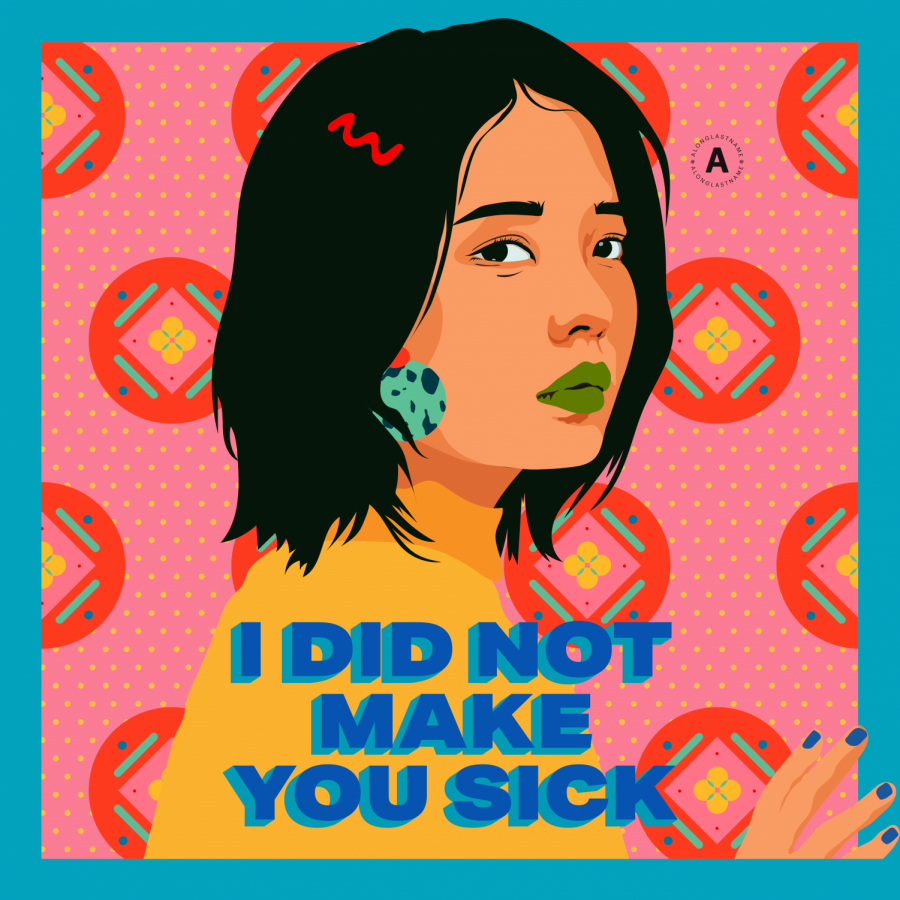College students can stop the spread of Asian American hate crimes
February 26, 2021
COVID-19 has been a merciless and seemingly insurmountable enemy. As frustrating as it is, the coronavirus pandemic revealed another hidden plague: racial hate.
The battle against racial hatred seems insurmountable and it can be difficult to address. But young, educated college professionals, like the 14,629 students that attend Baruch College, are in unique positions to help these vulnerable communities in need.
Since the beginning of last year, anti-Asian sentiment has been replicating exponentially.
As soon as news about the virus’ existence in the United States was reported, sales in predominantly Asian communities like New York City’s Chinatown plummeted. The xenophobia and racism grew more evident, with more than 70,000 posts tagged “Wuhan virus” on Instagram and 10,000 posts on Twitter tagged the “Kung Flu.”
Additionally, the nuances of what constitutes a hate crime make it hard to report and get justice. In New York City, it is not considered a hate crime unless there was verbal abuse.
For instance, 30-year-old Yaeji Kim was walking home from work when she was pepper-sprayed in the eyes by a man sitting in the passenger seat of a car. The car then drove away. According to CBS2, police sources say that this was classified as an assault but not as a hate crime even though it is clear that Kim was targeted for her race.
“I can’t really say that they should change the policy, but I think they should consider that there are some hate crimes without verbal language,” Kim said.
The nature of hate crimes make them complicated, and they should be handled with more sophistication than classification based on whether the attack contained verbal abuse. Approximately 70% of racial hate incidents against Asians are verbal. New York City, ranked after San Francisco, was reported to have the most hate incidents in 2020, according to Russell Jeung, chair and professor of the Asian American Studies Department at San Francisco State University.
In an attempt to control the spread of hate, the MTA had to denounce anti-Asian verbal attacks.

The hate is cowardly and relentlessly cruel, especially toward women and the elderly.
As early as April, a Brooklyn woman was severely burned after chemicals were flung onto her face and body. In July, an 89-year-old woman was slapped in the face and set aflame. Just a few weeks ago, 84-year-old Thai immigrant Vicha Ratanapakdee was senselessly killed after being violently pushed to the ground. Around the same time, Noel Quintana, a 61-year-old Filipino man riding the New York subway, was slashed across the face with a box cutter and required 100 stitches. These are just a few of the stories among more than 2,800 reported incidents like these nationwide, with a 1,900% increase of NYPD-reported anti-Asian hate crimes within the first half of last year.
And yet, according to activists, these numbers still “understate the actual number of anti-Asian hate incidents because most incidents are not reported.” The suffering this virulent hate has caused remains frustratingly invisible to those unaffected.
The symptoms of the suffering are difficult to articulate.
Language barriers limit the ability for Asians to reach out and seek help. According to a report, one in three Asian seniors in New York City live in a limited English-speaking household.
There is also a fear of speaking up.
Daniel Dae Kim and Daniel Wu are actors who have been using social media to bring awareness and change to these issues.
“I think historically in our community, especially with the elders, there’s a reluctancy to report crimes like this,” Wu, an actor and social media activist advocating for change, said. “I think people know that. Predators know that.”
Only recently did New York City Mayor Bill de Blasio form an NYPD task force employed against Asian hate crimes and a campaign to stop Asian hate through his “I Still Believe in Our City” public awareness campaign.
However, we cannot wait for our government to take the initiative. We need to take the initiative to make our government pay attention.
According to The Washington Post, experts say local police agencies “lack training and funding to properly investigate hate crimes, and many treat it as low priority.” In the 2019 hate crimes study, the FBI stated that of the 15,588 law enforcement organizations, only 2,712 agencies reported the total number of incidents contained in the report because the participation in reporting data is voluntary.
This is too inefficient.
These cases of hate crimes need to be addressed more seriously and students can be a part of the change to prevent more crimes from occurring.

As young aspiring professionals, college students are equipped with the ability to educate themselves on Asian American issues and, even broader, on racial issues, to learn how to structurally discuss discrimination and facilitate a cure for this virulent hate.
They can be the vaccine and antidote by acting as a generational bridge between the elderly and the children.
They can use social media platforms to educate others and organize events to support their communities.
Compassion in Oakland is a Chinatown community project that organized groups of hundreds of volunteers to walk the elderly home.
Actor Will Lex Ham is also a young advocate that participated in passing out pamphlets in Chinese and handing out self-defense whistles to the elderly.
Additionally, organizations like “Dear Asian Youth” have been created by young college and high school students striving to “empower, educate and uplift Asian youth.” Their content ranges from podcasts to concerts to connect Asian American youth narratives.
The effort to combat racial hate is underway, but it is far from enough.
Large cultural clubs at Baruch, like the United Chinese Language Association, or UCLA, and the Vietnamese Student Association have the ability to raise awareness and to promote these organizational events to a larger audience.
Furthermore, as college students seek internships or employment, they can hold their workplaces accountable in being inclusive by creating a dialogue about racial trauma so that nuanced discussions about things like Asiaphobia, the erasure of AAPI discrimination in the model minority myth and the bamboo ceiling can be addressed.
Baruch has a large Asian student population, an Asian president and an Asian interim-acting provost. It is a school that finds pride and strength in its cultural diversity. This is a fight not only against racial hate concerning Asians, it is also a fight against racial hate concerning all people.
More than anything, every American, immigrant or not, should be recognized and accepted as an American regardless of their race, color or creed. Racism is the virus, and it can only be fought through love and solidarity.
We must face this like we’ve faced the COVID-19 pandemic: with compassion, not hate, with logic, not irrationality and with love, not indifference. It concerns all of us.

Fight Against Asian American Hate:
Share and bring awareness to the issue –
Learn about the history of Asian American Pacific Islander Discrimination –
1. What is the ‘Model Minority’ Myth?
2. Asian American News
3. Learn about how to talk about racism, how to introduce change, and what bystander intervention is
Report instances of hate crimes –
1. Stop AAPI Hate
2. How to report Hate Crimes, Hate Crimes v. Hate Bias
Connect with Asian Americans –
1. Dear Asian Youth
2. Dear Asians Initiative (Bridging the gap between Asian and Black communities in addressing anti-blackness in Asian communities)
3. Send Chinatown Love = support Chinatown businesses suffering from the impacts of Covid-19







